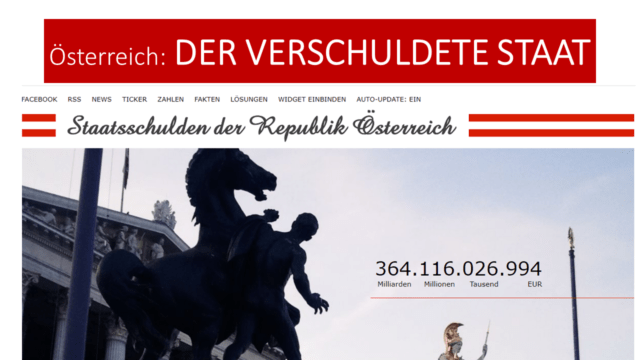Introduction
The Linde Group is a global leader in the industrial gas industry, providing a wide range of products and services to various sectors including healthcare, manufacturing, and energy. With a rich history dating back over 140 years, the company has established itself as a trusted and innovative partner for its customers around the world. In this blog post, we will delve into the journey of The Linde Group, exploring its humble beginnings, its rise to global dominance, and the strategies and innovations that have propelled its success. We will also discuss the company’s commitment to sustainability, its cutting-edge research and development efforts, and its strategic partnerships that have helped shape its trajectory. Join us as we uncover the story of The Linde Group and its position at the top of the industrial gas industry.
The Linde Group: A Journey to the Top of the Industrial Gas Industry
The Linde Group was founded in 1879 by Carl von Linde in Munich, Germany. Initially focused on refrigeration technology, the company quickly expanded into the production of industrial gases such as oxygen and nitrogen. Over the years, The Linde Group grew both organically and through strategic acquisitions, establishing a strong presence in Europe and later expanding into other regions around the world.
Today, The Linde Group operates in over 100 countries and employs more than 80,000 people worldwide. It is one of the largest suppliers of industrial gases globally, with a diverse portfolio of products and services that cater to a wide range of industries. The company’s success can be attributed to its commitment to innovation, technological advancements, and strategic partnerships.
From Humble Beginnings to Global Dominance: The Linde Group’s Story
The story of The Linde Group is one of perseverance and innovation. Carl von Linde’s invention of the first practical refrigeration machine in 1876 laid the foundation for what would become a global industrial gas giant. In 1879, he founded the Gesellschaft für Linde’s Eismaschinen Aktiengesellschaft, which later became The Linde Group.
In the early years, the company focused on refrigeration technology and the production of liquid air. However, it soon expanded into the production of industrial gases such as oxygen and nitrogen, which were in high demand for various industrial processes. This diversification proved to be a turning point for the company, as it allowed them to tap into new markets and establish a strong foothold in the industry.
Over the years, The Linde Group continued to grow and expand its operations. It made strategic acquisitions and partnerships to strengthen its position in key markets and gain access to new technologies. Today, the company is recognized as a global leader in the industrial gas industry, with a strong presence in Europe, Asia, and the Americas.
Exploring Linde’s Winning Strategy in the Industrial Gas Market
The success of The Linde Group can be attributed to its winning strategy in the industrial gas market. The company has consistently focused on delivering high-quality products and services to its customers while differentiating itself from competitors.
One key aspect of Linde’s strategy is its commitment to customer satisfaction. The company works closely with its customers to understand their specific needs and develop tailored solutions that meet their requirements. This customer-centric approach has helped Linde build long-term relationships with its clients and establish a reputation for reliability and excellence.
Another important element of Linde’s strategy is its emphasis on innovation. The company invests heavily in research and development to stay at the forefront of technological advancements in the industry. By continuously improving its products and processes, Linde is able to offer innovative solutions that provide added value to its customers.
Additionally, Linde has a strong focus on operational excellence. The company constantly strives to optimize its operations and improve efficiency, which allows it to deliver products and services at competitive prices. This focus on operational excellence has helped Linde maintain a strong financial position and achieve sustainable growth.
Innovation and Technology: The Driving Forces Behind Linde’s Success
Innovation and technology have been the driving forces behind Linde’s success in the industrial gas industry. The company has a long history of pioneering advancements in gas technology and has consistently pushed the boundaries of what is possible.
Linde’s commitment to innovation is evident in its extensive research and development efforts. The company invests heavily in R&D to develop new products, improve existing ones, and explore new applications for industrial gases. This focus on innovation has allowed Linde to stay ahead of the competition and offer cutting-edge solutions to its customers.
One example of Linde’s innovative approach is its development of cryogenic freezing technology. The company was one of the first to introduce this technology, which revolutionized the food processing industry by allowing for faster and more efficient freezing of food products. Today, cryogenic freezing is widely used in the food industry, thanks in large part to Linde’s pioneering efforts.
Linde has also embraced digitalization and Industry 4.0 technologies to drive innovation. The company leverages data analytics, automation, and artificial intelligence to optimize its operations, improve safety, and enhance customer experiences. By harnessing the power of digital technologies, Linde is able to deliver more efficient and sustainable solutions to its customers.
Linde’s Global Expansion: How the Company Conquered International Markets
One of the key factors behind Linde’s success is its global expansion strategy. The company recognized early on the importance of expanding its presence beyond its home market in Germany and ventured into international markets.
Linde’s global expansion began in the early 20th century when it established subsidiaries in countries such as Austria, Switzerland, and Italy. These subsidiaries served as a springboard for further expansion into other European markets. In the following decades, Linde continued to expand its operations across Europe, establishing a strong presence in countries such as France, the United Kingdom, and Spain.
In the 1970s, Linde made its first foray into the North American market through a joint venture with Union Carbide Corporation. This partnership allowed Linde to gain access to the vast North American market and establish a strong presence in the region. Since then, Linde has continued to expand its operations in North America through organic growth and strategic acquisitions.
In recent years, Linde has also focused on expanding its presence in emerging markets such as China and India. These markets offer significant growth opportunities due to their rapid industrialization and increasing demand for industrial gases. Linde has made strategic investments in these markets to capitalize on the opportunities they present.
The Linde Group’s Commitment to Sustainability and Environmental Responsibility
Sustainability and environmental responsibility are core values for The Linde Group. The company is committed to minimizing its environmental impact and promoting sustainable practices throughout its operations.
Linde’s commitment to sustainability is reflected in its products and services. The company offers a wide range of solutions that help its customers reduce their carbon footprint and improve energy efficiency. For example, Linde provides technologies for carbon capture and storage, which help reduce greenhouse gas emissions from industrial processes.
In addition to its products and services, Linde is also focused on reducing its own environmental footprint. The company has set ambitious targets to reduce its greenhouse gas emissions, water consumption, and waste generation. It invests in energy-efficient technologies and renewable energy sources to power its operations.
Linde is also actively involved in various sustainability initiatives and partnerships. The company collaborates with governments, industry associations, and non-profit organizations to drive sustainability efforts across the industry. It participates in research projects aimed at developing new technologies and processes that promote sustainability.
Behind the Scenes: Unraveling Linde’s Cutting-Edge Research and Development
Research and development play a crucial role in Linde’s success. The company has a dedicated team of scientists and engineers who are constantly pushing the boundaries of gas technology and developing innovative solutions.
Linde’s research and development efforts are focused on three main areas: improving existing products and processes, developing new products and applications, and exploring emerging technologies. The company invests significant resources in R&D to stay at the forefront of technological advancements in the industry.
One area of focus for Linde’s R&D team is the development of new gas applications. The team works closely with customers to understand their specific needs and develop tailored solutions that address their challenges. This customer-centric approach ensures that Linde’s products and services are aligned with market demands and provide maximum value to its customers.
Linde also collaborates with external partners such as universities, research institutions, and other companies to drive innovation. These partnerships allow the company to leverage external expertise and access cutting-edge technologies that complement its own capabilities. By fostering a culture of collaboration and knowledge sharing, Linde is able to accelerate the pace of innovation and bring new solutions to market faster.
The Linde Group’s Leadership: Key Figures Who Shaped the Company’s Success
The success of The Linde Group can be attributed to the vision and leadership of key figures who have shaped the company’s trajectory over the years. These leaders have played a significant role in driving innovation, expanding the company’s operations, and establishing its position as a global leader in the industrial gas industry.
One key figure in Linde’s history is Carl von Linde, the company’s founder. His invention of the first practical refrigeration machine laid the foundation for what would become The Linde Group. Carl von Linde’s entrepreneurial spirit and commitment to innovation set the stage for the company’s future success.
Another influential leader in Linde’s history is Wolfgang Reitzle, who served as the company’s CEO from 2002 to 2014. Under Reitzle’s leadership, Linde underwent a significant transformation, focusing on its core industrial gases business and divesting non-core assets. This strategic shift helped streamline the company’s operations and position it for future growth.
Today, Linde is led by Sanjiv Lamaba who took over from Steve Angel as CEO in 2022.
Steve Angel, who took over as CEO in 2018. Angel brings a wealth of experience in the industrial gas industry and has been instrumental in driving the company’s growth and expansion. Under his leadership, Linde has continued to focus on innovation, sustainability, and customer satisfaction.
Linde’s Strategic Partnerships: The Collaborations That Propelled the Company Forward
Strategic partnerships have played a crucial role in Linde’s growth and success. The company has formed alliances with other industry players, research institutions, and customers to drive innovation, expand its market reach, and create value for its stakeholders.
One example of a strategic partnership is Linde’s collaboration with Shell on the development of hydrogen infrastructure. The two companies have joined forces to build a network of hydrogen refueling stations for fuel cell electric vehicles. This partnership leverages Linde’s expertise in hydrogen technology and Shell’s experience in the energy sector to accelerate the adoption of hydrogen as a clean energy source.
Linde has also formed strategic partnerships with customers to develop customized solutions that address their specific needs. By working closely with customers, the company is able to gain insights into their challenges and develop tailored solutions that provide maximum value. These partnerships help strengthen customer relationships and drive mutual growth.
Additionally, Linde collaborates with research institutions and universities to drive innovation. The company recognizes the importance of external expertise and leverages these partnerships to access cutting-edge technologies and stay at the forefront of scientific advancements. By fostering a culture of collaboration, Linde is able to tap into a diverse pool of knowledge and accelerate the pace of innovation.
Future Outlook: What’s Next for The Linde Group in the Industrial Gas Industry
Looking ahead, The Linde Group is well-positioned to capitalize on the opportunities in the industrial gas industry. The company’s strong market position, commitment to innovation, and focus on sustainability provide a solid foundation for future growth.
One key area of focus for Linde is the transition to a low-carbon economy. The company is investing in technologies and solutions that help reduce greenhouse gas emissions and promote sustainable practices. As governments and industries around the world strive to reduce their carbon footprint, Linde is well-positioned to provide the necessary solutions and support.
Linde also sees significant growth potential in emerging markets such as China and India. These markets are experiencing rapid industrialization and increasing demand for industrial gases. Linde has made strategic investments in these markets to capitalize on the opportunities they present and establish a strong presence.
Furthermore, Linde continues to invest in research and development to drive innovation and develop new products and applications. The company recognizes the importance of staying at the forefront of technological advancements in order to meet the evolving needs of its customers.
Conclusion
The Linde Group’s journey to the top of the industrial gas industry is a testament to its commitment to innovation, customer satisfaction, and sustainability. From its humble beginnings as a refrigeration technology company, Linde has evolved into a global leader with a diverse portfolio of products and services.
The company’s success can be attributed to its winning strategy, which includes a customer-centric approach, a focus on innovation, and operational excellence. Linde’s commitment to sustainability and environmental responsibility sets it apart from its competitors and positions it as a trusted partner for customers seeking sustainable solutions.
As The Linde Group looks towards the future, it remains focused on driving innovation, expanding its market reach, and delivering value to its stakeholders. With its strong leadership, strategic partnerships, and commitment to sustainability, the company is well-positioned to continue its growth and maintain its position at the top of the industrial gas industry.




